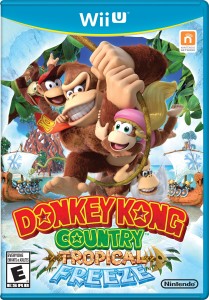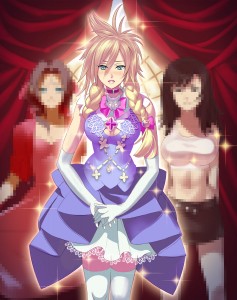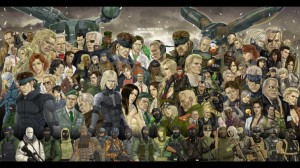Titanfall Skips South Africa Due to Insufficient Xbone Infrastructure
This week Microsoft’s Yusef Mehdi told Bloomberg that “It’s hard to overstate the importance of Titanfall to the Xbox One release this year. For us, it’s a game changer. It’s a system seller.” This may indeed prove to be the case, yet Titanfall is unlikely to have this effect in South Africa, where the game has just been cancelled a mere three days before release. In the run-up to the Xbone’s launch Microsoft made a big to-do about “the power of the cloud“, but what they neglected to mention is that there is naught but blue skies over Africa. That is to say, none of Microsoft’s Azure servers are located on the African continent, and as such a South African Xboner’s closest accessible server infrastructure is located in the UK, with a ping of around 200.
It would seem that such a high latency has proved to be unacceptable even to EA, a company famous for shipping online multiplayer modes that are broken messes at launch:
“After conducting recent online tests for Titanfall, we found that the performance rates in South Africa were not as high as we need to guarantee a great experience, so we have decided not to release Titanfall in South Africa at this time. We understand this is a disappointment for local fans and will keep fans posted on any future plans regarding the release of Titanfall in South Africa“.
If the game had shipped with a single player campaign, then one’s feeling on the matter is that the South African launch may still have gone ahead, but seeing as the game is a strictly multiplayer affair, it would appear that shipping a broken product is a bridge too far for even EA to stomach. Given the implicit Xbone marketing suggestion that one must buy an Xbone to enjoy the year’s biggest game, South African Xboners would be well within their rights to feel cheated and furious. Recriminations have already begun pouring in, and this issue alone should be sufficient to see EA awarded worst company in America three years running – which is ironic considering that here they are, for once, behaving ethically.
Kojima Is Concerned That MGSV: The Phantom Pain Will Be Too Big For Players to Finish
Metal Gear mastermind Hideo Kojima has this week expressed his sincere concern that Metal Gear Solid V: The Phantom Pain will prove to be too large for many players to complete. The game itself is thought to be over two-hundred times larger than Metal Gear Solid V: Ground Zeroes, with reams of missions and content.
“players will start complaining that they can’t clear the game, [it’s] too big to clear.
The Phantom Pain has the risk that people won’t be able to finish the story as it will be “more than 200x bigger than Ground Zeroes.
I cannot disclose the amount of missions [in The Phantom Pain], but we’ll have a lot of missions in there.”
That is quite some problem to have. Too much content is better than too little content, but it is still hardly ideal. If only there were some way to, say, spread that surfeit of content over more than one game so as to be easier for players to digest. If only there just happened to be a perfect vehicle for this extra content releasing across four platforms this very month – and a vehicle, one might add, that has been routinely blasted by certain quarters for containing too little content for the asking price. Only in an ideal world, eh?
It would seem that gamers will have their work cut out for them when The Phantom Pain launches in [presumably] 2015. It is truly regrettable that some gamers might not play the title to completion, but there is literally no way around this little conundrum. One just hopes that with Metal Gear Solid VI Kojima will have the foresight to split the project into two games!

Donkey Kong Country: Tropical Freeze did little change people’s minds about the Wii U’s power deficit.
Nintendo Studio Calls Nintendo Console a ‘Powerhouse’
Hilariously, hot off the recent release of Donkey Kong Country: Tropical Freeze, Retro Studios has this week elected to reopen the debate surrounding the capability of the Wii U by boldly declaring it a “powerhouse”. Retro seems a little late to the party in this instance, as Nintendo’s disingenuous claims regarding the Wii U’s power mostly stopped shortly after launch when the proof was in the eating.
“Unfortunately, the perception is that it’s not a very powerful machine, that’s just not true. It’s a powerhouse. It’s more than adequate to make great games on.”
Nintendo has already amply demonstrated that the Wii U is more than adequate to make great games on – but that is not the same as saying that the Wii U is a powerful console. Some of the most attractive games ever made were developed for PS2; horsepower is no barrier. One understands that, being a Nintendo studio, Retro wants to come out in support of their parent company’s much maligned console, yet it seems doubtful that reopening the power debate will do the Wii U any favours. In terms of FLOPS [floating point operations, a common measure of processing power] the power gap between the Wii U and the Xbone is greater than the total number of FLOPS that the Wii U is capable of. No doubt the Wii U feels very powerful to a studio who, in 2014, has only just now released their first HD video game, but when viewed from outside the walls of fortress Nintendo the Wii U is a console of inarguably modest capabilities. Super Mario 3D World amply demonstrates that the Wii U is capable of some truly dazzling results, but Reggie’s pre-launch bluster of being able to keep up with the PS4 and Xbone was entirely without merit, and Retro’s outlandish claims are little more convincing.

